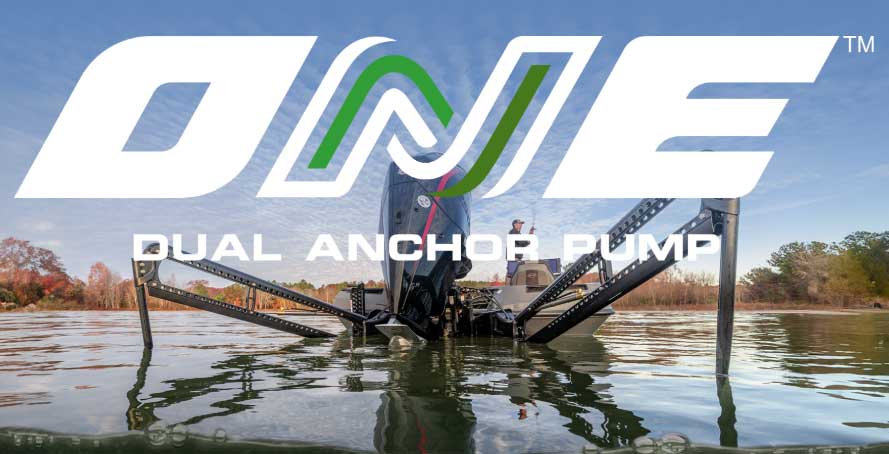Once a sport guided by pure instinct, experience, and time on the water, bass fishing has now entered a high-tech era driven by the rise of live sonar. These forward-facing systems have transformed how anglers locate and target fish, delivering real-time underwater views that can mean the difference between victory and a blank scorecard. But with this leap in capability comes a surge in complexity, cost, and controversy. In this in-depth look, we’ll first compare 12-inch flagship units from Garmin, Lowrance, and Humminbird, explore their sonar modes and tactical advantages, weigh the true financial investment, and then examine the growing debate over whether forward-facing sonar is advancing or eroding the sport.
This article focuses on 12-inch units from Garmin, Lowrance, and Humminbird and provides an overview of sonar modes for bass fishing, key advantages, costs, and multi-platform setups..
Garmin Offerings
Key 12-inch unit: GPSMAP 1223xsv (12″ touchscreen, UHD scanning sonar, integrates with LiveScope Plus for live views). Retail Price – $3,099.99
Advantages: Crystal-clear real-time imaging that spots suspended bass; seamless trolling motor integration for precise positioning; fast processing reduces lag in dynamic fishing.
Modes of Use (In-Depth):
- Traditional CHIRP Sonar: Sweeps 150-240 kHz low, 455-800 kHz high for detailed fish arches and bottom separation. Wide beam (up to 24°) covers large areas for locating schools; narrow beam (7°) pinpoints individual bass near structure. Adjust sensitivity to filter noise in murky water, enhancing target ID up to 800ft deep.
- ClearVü (Down Imaging): High-frequency (800-1200 kHz) downward scan provides photo-like views of structure below boat. Reveals brush piles, rocks, and bass hiding spots with 1-inch target separation; zoom mode magnifies for close inspection during vertical jigging.
- SideVü (Side Imaging): Scans 500ft port/starboard at 455 kHz for wide coverage of ledges/drop-offs. High-res mode distinguishes bass from baitfish; palette adjustments highlight contrasts in vegetation for spotting ambush points.
- Panoptix LiveScope (Forward/Down/Perspective): Real-time live sonar (530-1100 kHz). Forward mode views 200ft ahead, tracking lure-fish interactions for sight fishing; Down mode scans vertically for suspended bass; Perspective mode (bow-mounted) offers 3D-like overhead view for shallow structure navigation. Stabilizer reduces boat motion artifacts; ideal for offshore graphing, boosting reaction strikes by 40% in tests. Retail Price – $1,499.99 to $2,599.99.
- FrontVü (Collision Avoidance): Forward-facing avoidance sonar detects obstacles 300ft ahead; auto-gain adjusts for speed, preventing snags in timber-rich bass habitats.
Lowrance Offerings
Key 12-inch unit: HDS PRO 12 (12″ SolarMAX HD display, supports ActiveTarget 2 and Active Imaging HD). Retail Price: $3,099.99
Advantages: Affordable high-res live sonar rivals premium units; Ghost trolling integration for silent stalking; FishReveal overlays CHIRP on imaging for easy bass ID in clutter.
Modes of Use (In-Depth):
- CHIRP Sonar: Broadband 50-200 kHz for deep penetration (up to 3000ft) with fish arches; medium CHIRP (83 kHz) balances coverage/detail for mid-water bass schools. Auto-tuning optimizes frequency; noise rejection filters interference from other boats.
- DownScan Imaging: 455-800 kHz downward views show structure shadows; high-def mode (HD) at 1.2 MHz separates bass from bottom with 0.5-inch resolution. Split-screen with CHIRP for simultaneous fish/structure analysis during dropshotting.
- SideScan Imaging: Extends 600ft side-to-side; HD mode enhances contrast for spotting isolated bass in weeds. Range lines measure distances; ideal for scanning creek channels, reducing search time.
- ActiveTarget 2 Live Sonar (Forward/Down/Scout): Ultra HD live views (up to 135ft). Forward mode tracks fish movements in real-time for casting accuracy; Down mode vertical scans for jigging; Scout mode wide-angle (180°) surveys ahead for locating schools. Brush mode filters vegetation noise; syncs with trolling for auto-follow, increasing catches in tournaments.
- Active Imaging HD (3-in-1): Combines CHIRP/Side/Down in one transducer; ghost rejection eliminates false echoes, clarifying bass in heavy cover.
Humminbird Offerings
Key 12-inch unit: HELIX 12 CHIRP MEGA SI+ GPS G4N (12.1″ display, MEGA Imaging+); also SOLIX 12 for touch interface. Retail Price – $3,199.99
Advantages: Superior 360° coverage minimizes blind spots; Minn Kota i-Pilot Link for contour-following; detailed mapping reveals hidden bass spots.
Modes of Use (In-Depth):
- Dual Spectrum CHIRP Sonar: Wide mode (140-240 kHz, 42° beam) for broad coverage spotting roaming bass; Narrow mode (180-240 kHz, 25° beam) for precise arches in depths to 1200ft. Full mode combines both; jitter reduction stabilizes readings at speed.
- MEGA Down Imaging+: 1.2 MHz ultra-high-res downward scans to 200ft; the + version extends range 30%, showing fine details like bass fins in thermoclines. Zoom/pause for analyzing strikes during finesse fishing.
- MEGA Side Imaging+: Scans 250ft sides at 1.2 MHz; + enhances clarity for distinguishing bass from structure shadows. Coverage circles measure areas; perfect for graphing points/breaks.
- MEGA 360 Imaging: 360° sweep to 150ft radius; stationary mode locks on spots without moving boat, revealing circling bass. Custom palettes highlight fish; integrates with spot-lock for hands-free hovering.
- MEGA Live 2 (Forward/Down/Landscape): Real-time views to 150ft. Forward mode watches lure presentations; Down mode for vertical structure; Landscape mode horizontal wide-view for shallow flats. 15 color options; TargetLock keeps beam on fish independently of boat direction, aiding in windy conditions.
Ranking of Best Technology (12-Inch Focus)
- Garmin: Superior LiveScope clarity and modes for dynamic bass pursuit.
- Humminbird: Unmatched 360/MEGA depth for structure-heavy waters.
- Lowrance: Best value with versatile ActiveTarget.
Multi-Platform Use
Mixing (e.g., Garmin LiveScope + Humminbird 360) provides comprehensive views forward live + surround imaging spotting more bass, reducing misses. Pros report 25%+ catch increase via redundancy; drawbacks: cost, setup complexity. Ideal for competitive anglers.
Optimal multi-brand setup for bass anglers in 2025:
Bow – Garmin GPSMAP 1223xsv with LiveScope for forward-facing sonar (superior clarity for offshore targeting); Humminbird HELIX 12 with MEGA 360 for all-around structure scanning (reduces blind spots); Lowrance HDS PRO 12 for 2D sonar, waypoint management, and range rings (efficient mapping).
Console – Humminbird HELIX 12 for LakeMaster mapping and side imaging; Lowrance HDS PRO 12 for user-friendly interface and Navionics updates.
Pros like Jacob Wheeler use this “Triple Threat” for brand-specific strengths, enhancing fish location. John Crews adds Garmin ECHOMAP at bow for adjustable LiveScope, proving effective in tournaments. In FFS-banned leagues, many prioritize Humminbird XPLORE with 360 and networked trolling for structure focus. Advantages: Comprehensive views can boost catches by 25%+, but it has drawbacks: higher cost and more complex setup and use.
So what about anglers who fish events that allow FFS but also fish tournaments that don’t allow FFS? Will we start seeing pro anglers with two boats, one set up for just FFS and the other without FFS so they can take full advantage of the other modes like 360? Or will companies create ways to quickly remove an FFS setup for a non-FFS setup?
Cost Scenarios
Unit Costs (approx., incl. basic transducers, as of Aug 2025):
- Garmin GPSMAP 1223xsv: $3,100
- Humminbird HELIX 12: $3,200
- Lowrance HDS PRO 12: $3,100
Typical Pure Brand Setup (5 units: 3 front, 2 console):
- Garmin: 5 × $3,100 = $15,500
- Lowrance: 5 × $3,100 = $15,500
- Humminbird: 5 × $3,200 = $16,000
Multi-Brand Setup 1 (2 GPSMAP 1223xsv and 1 HELIX 12 front; 2 GPSMAP 1223xsv console): $15,500. (2 HDS PRO 12 and 1 HELIX 12 front; 2 HDS PRO 12 console): $15,500 Comparison: Identical cost; Setup 2 offers better value via Lowrance’s affordable integration vs. Garmin’s premium clarity.
Installation and Additional Hardware Costs
For high-end setups (e.g., 5 units), professional installation averages $100-150/hour, totaling $750-1,500 for wiring, mounting, and integration. Additional hardware includes advanced transducers (Garmin LiveScope Plus: $1,700; Lowrance ActiveTarget 2: $1,700; Humminbird MEGA Live 2: $1,500), mounts ($50-200 each), networking cables (Ethernet/NMEA 2000: $100-500), and power upgrades (batteries: $200-500). Total add-ons: $2,000-5,000 per boat.
For comparison, in 1990, a fully rigged Ranger bass boat cost approximately $17,000 or more. Today, outfitting a boat with electronics alone can easily run $15,000 to $18,000 and up. Just for the sake of history, the Lowrance X-16 paper graph was the latest in tech then, and it was expensive for the time at around $600.
Ways to Reduce Costs
DIY installation saves $500-1,000 (basic tools/wiring: $60-100). Buy bundles/sales (e.g., Garmin UHD on sale for $1,600). Opt for used/refurbished units; start with fewer screens; choose budget transducers initially.
Ongoing Update Costs
Firmware updates are free across brands. Map subscriptions (e.g., Garmin ActiveCaptain: $20-50/year; Humminbird CoastMaster: one-time $150+). New tech often requires hardware upgrades ($500-2,000 every 2-3 years for features like improved imaging).
Always remember that as technology advances, today’s capabilities can quickly become obsolete. In the computer world, the rule of thumb was every 18-24 months your computer became obsolete compared to new technology, but today the pace has slowed to around 3 years or more, with some declaring Moore’s Law dead. In the bass fishing world, the cycle seems to be more like 24 to 36 months. Look at the time from first-generation LiveScope/ActiveTarget to gen-two capabilities and refinements. This hasn’t changed; new advancements in technology will bring new costs.
Controversies in Forward-Facing Sonar (FFS)
Forward-facing sonar (FFS), like Garmin Panoptix LiveScope and Lowrance ActiveTarget, has sparked heated debates in bass fishing.
Skill Erosion: Critics argue FFS turns angling into a “video game,” diminishing traditional skills like reading water and instinct. Many have compared the use of live sonar to headlighting deer, while others note that while you can see the fish, that doesn’t mean they will bite. But any angler worth their own salt can figure that part out. Today’s anglers can spot and target fish in real-time, leading to calls for bans as it gives unfair advantages. Supporters say it enhances efficiency without removing challenges like presentation.
Tackle Sales Decline: The emergence of forward-facing sonar (FFS) has coincided with a continued downturn in tackle sales across the industry. While FFS is not solely responsible, the past five years of challenging economic conditions have further contributed to the decline. Sales across a broad range of tackle categories have fallen, even as demand for products that complement FFS technology remains so strong that manufacturers struggle to keep up. As in the past, the industry is adapting tackle manufacturers are actively developing innovative products designed to attract anglers and enhance their success on the water.
Cost Barriers: High prices create economic divides, pricing out amateurs and widening pro-amateur gaps. Anglers now have to add all the electronics pushing $18k on their $100k bass boat if they want to be a serious player in the sport.
Spectator Boredom: Live coverage becomes dull, watching anglers stare at screens instead of action, hurting viewership.
Environmental/Ethical Impact: Increased pressure on deep-water bass and potential post-release mortality (barotrauma); some fisheries managers are discussing whether additional guardrails are warranted. Critics liken FFS to “performance-enhancing” tech, raising fairness questions.
Will DNRs get involved? Like with the A-Rig, could state natural-resources agencies limit or outright ban the use of FFS on bodies of water that are greatly impacted by its use? The DNR norm is to control harvest, not how fish are caught, so it’s unlikely that States would ban the use of FFS.
Is AI Next? With artificial intelligence reshaping nearly every corner of our world, it’s only a matter of time before it finds its way into fish-finding technology. Imagine running down the lake when your sonar powered by AI alerts you that you’ve just passed a school of Largemouth or Smallmouth bass, even providing an exact route to get back on top of them. Once in position, the AI scans below, instantly identifying each fish’s species and estimating its size. With today’s live sonar already offering increasingly clear images, many skilled anglers can already differentiate species and gauge size, especially in shallow water where they target bigger bass. AI will push this further, delivering species and size data on every fish beneath the boat. And because AI can already access information on every bait on the market and draw from decades of fishing science, it could easily tell you which areas have the highest probability of holding bass, guide you to them, pinpoint their exact location, and even recommend the best bait and presentation, prioritizing the largest fish first.
Some anglers will scoff and call it impossible. But unless you’ve been living under a rock, you’ve seen how fast AI has advanced in just the past two years. In the competitive race among electronics manufacturers, the first company to launch a true AI fishing assistant will almost certainly dominate sales. And with their business model built on selling more units, can you really blame them?
Tournament Bans/Restrictions: In 2025, the NPFL banned FFS entirely, citing fairness. MLF limited boats to two FFS/360 transducers, a move many anglers view as a weak compromise. B.A.S.S. faces pressure to act but has resisted, in part due to sponsorships. One tournament series in Texas is testing a rule that restricts FFS without banning it outright: under its 2026 rules, anglers may not use FFS until they have a limit in the boat; once a limit is secured, FFS is permitted. As you can see, everyone has a different answer to the issue. Is there a single solution? Probably not, but there is an option.
Industry solutions could eliminate FFS controversies with Tournament Mode
While many rules can be written to govern the use or non-use of FFS, a more effective approach is for the manufacturers who brought the technology to market to offer a tournament-specific solution: a “Tournament Mode”a setting that would reduce FFS’s impact on competition in two ways today, with a third enhancement if AI is added to these platforms.
- Software-Implemented Time Delay for Live (15-30 seconds): Introduce a tamper free and real-time feed delay, allowing fish spotting but preventing precise, immediate jigging on a fish’s nose, thus maintaining sonar’s scouting role while preserving angling skills.
- Software-Enabled Location Offset for Live (random 5-10 ft Blur): Introduce a tamper free slight positional inaccuracy in displays, enabling general fish location but hindering exact lure drops, addressing “spot-on” complaints without losing efficiency gains.
- Suppress any AI guidance; OK, it isn’t available yet, but when it is, it should also be disabled in ‘Tournament Mode”.
These features could be integrated as a “Tournament Mode” in unit settings, logging start/stop times for tournament directors, and displaying mode status on the main screen. So the question is, would the OEMs add Tournament Mode for their FFS units? A special tournament mode would promote fairness but would require all three manufacturers’ adoption and implementation through a set of standards with the same parameters, with safeguards to prevent tampering.
Adding a control like “Tournament Mode” could resolve FFS issues universally. This is very feasible for Garmin, Lowrance, and Humminbird without losing market share or restricting live sonar use outside tournaments. It would actually increase sales because anglers would not have to worry about removing connections or adding more devices to block live sonar, and they could just turn on Tournament Mode instead.
You may assume this article is saying live sonar is bad, but that’s not the case. Forward-facing sonar (FFS) has made dramatic changes to the ability of anglers to find and catch fish, and that is always a great thing. We have learned so much about the behavior of bass and other species, which helps us as anglers stay in the right places to find and catch fish. It has also helped bring more youth into the sport, as younger anglers quickly connect with FFS since it is real-time and provides immediate feedback on how to locate and catch fish.
However, with the great abilities that live sonar brings, it also creates an even greater responsibility, ensuring a level playing field for all anglers. By balancing innovation with fairness, we can protect both the competitive spirit of our sport and the fisheries we all depend on.
Forward-facing sonar has undeniably elevated modern bass fishing by speeding discovery, improving efficiency, and drawing new anglers into the sport. Yet that same leap has introduced high costs, uneven access, and fairness concerns about competitive balance and conservation, especially around deep-water pressure and post-release mortality. The patchwork of tournament rules shows there’s no single fix, but an industry-led “Tournament Mode” time delay, slight location offset, and suppressed AI guidance offers a practical way to level the field without banning innovation. If manufacturers adopt common standards with tamper-proof safeguards, we can keep tournament fishing about skill, decisions, and stewardship. Embracing progress while protecting fairness and fisheries isn’t a contradiction; it’s the blueprint. It’s very possible to lead with both innovation and integrity so the next generation inherits not just better electronics, but better fishing.







